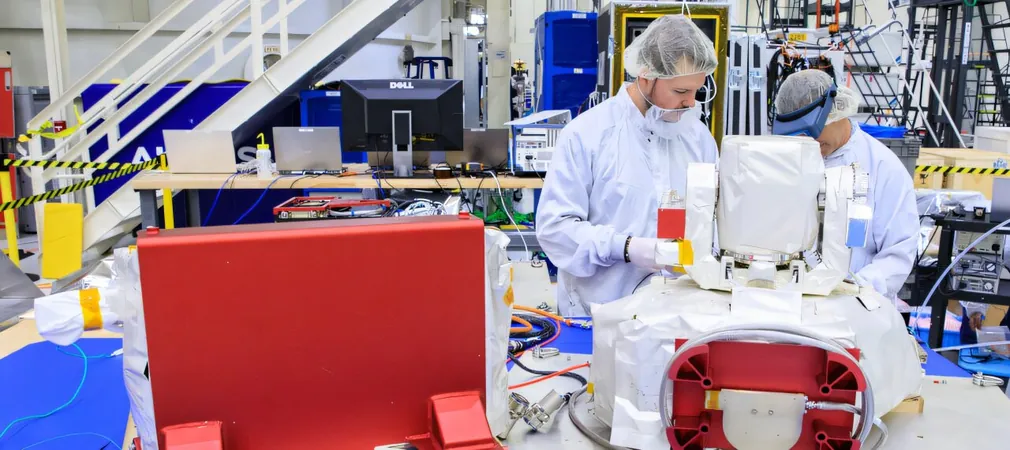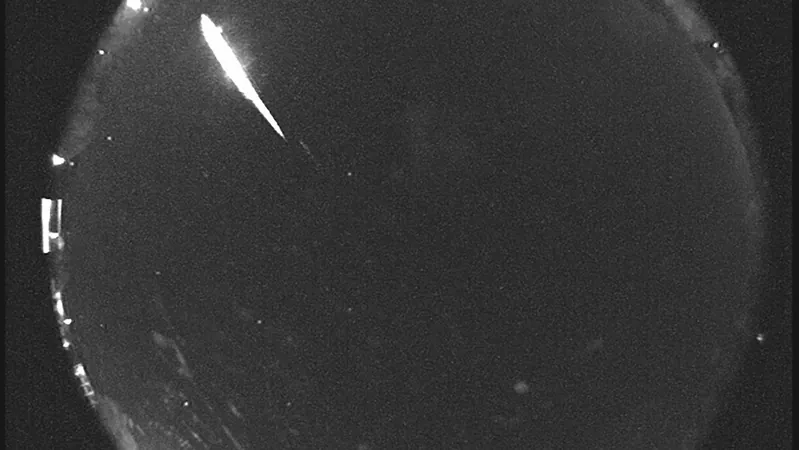
Historic Leap: Artemis II Readies for Moon Flyby with Revolutionary Laser Communication
2024-11-04
Author: Emily
Historic Leap: Artemis II Readies for Moon Flyby with Revolutionary Laser Communication
In a few short years, the world will witness a thrilling return to the moon with NASA's Artemis II mission, scheduled to launch no earlier than September 2025. This exciting project marks the first time in over 50 years that humans will embark on a journey beyond low Earth orbit, following Neil Armstrong's legendary steps during the Apollo 11 mission in 1969.
The Apollo program concluded with Apollo 17, which was NASA's last mission to land humans on the lunar surface, but since then, we’ve been confined to Earth’s orbit. However, Artemis II promises to reignite our exploration efforts, leading to future missions, including Artemis III, which aims to set foot on the moon again and establish a sustainable human presence there in preparation for eventually reaching Mars.
Cutting-Edge Laser Communication Technology
Artemis II is poised to be groundbreaking not just for human space exploration, but also for incorporating cutting-edge laser communication technology. For the first time in history, a crewed mission will utilize laser communication (lasercom) to enhance data transmission capabilities. The Orion Artemis II Optical Communications System (O2O) is specially designed for this purpose, signaling a leap forward in how spacecraft relay information back to Earth.
Unlike traditional radio wave communication, lasercom utilizes infrared laser light, allowing for a vastly greater volume of data to be transmitted more efficiently. The implications of this are huge: the O2O system promises high-resolution images and videos of the lunar surface, contrasting sharply with the grainy footage from the Apollo missions. Additionally, it facilitates real-time communication links between astronauts in the Orion spacecraft and mission control, including voice calls and data transfers—all crucial for the mission's success and safety.
The O2O system can communicate at astounding speeds of up to 260 megabits per second (Mbps), connecting with optical ground stations located in New Mexico and California, taking advantage of minimal cloud cover to ensure clear signal transmission.
A Legacy of Innovation in Space Communication
The innovative Modular, Agile, Scalable Optical Terminal (MAScOT), developed by researchers at MIT Lincoln Laboratory, is the heart of the O2O system. Designed to be compact yet powerful, MAScOT employs a precision gimbal to track laser beams during communication, ensuring efficiency in data transfers.
In fact, MAScOT's capabilities were already trialed with the Integrated Laser Communications Relay Demonstration (LCRD), which was launched to the ISS in November 2023. The success of ILLUMA-T, a part of the LCRD mission, demonstrated the potential for high-definition, two-way video communication—paving the way for Artemis II's ambitious goals, such as streaming 4K video from lunar orbit or conducting video calls back to Earth.
With Artemis II preparing to take advantage of these technological advancements, astronauts will be able to not only relay crucial mission data quickly but also inspire the next generation of space explorers through live broadcasts and interactive communications. Imagine astronauts discussing their lunar adventures in real-time with students around the world—what a way to spark interest in STEM!
A Bold Future Awaits
Preparations for Artemis II reflect a concerted effort to ensure that this mission is a resounding success. The industry leaders at Lincoln Laboratory are working in tandem with NASA to apply lessons learned from past missions, enhancing reliability and efficiency of the O2O system. A crucial mission readiness test was recently completed, validating essential functions and user applications crucial for operations aboard Orion.
NASA's Apollo missions might be a legendary chapter in space exploration history, but the Artemis missions signify a bold future where data-rich interactions and deep-space explorations become commonplace. As Artemis II gears up for this historic lunar flyby, the foundation is being laid for unprecedented exploration and international collaboration in space, ultimately aiming for human missions to Mars in the coming decades.
Stay tuned as we countdown to a new era of lunar exploration and beyond!









 Brasil (PT)
Brasil (PT)
 Canada (EN)
Canada (EN)
 Chile (ES)
Chile (ES)
 España (ES)
España (ES)
 France (FR)
France (FR)
 Hong Kong (EN)
Hong Kong (EN)
 Italia (IT)
Italia (IT)
 日本 (JA)
日本 (JA)
 Magyarország (HU)
Magyarország (HU)
 Norge (NO)
Norge (NO)
 Polska (PL)
Polska (PL)
 Schweiz (DE)
Schweiz (DE)
 Singapore (EN)
Singapore (EN)
 Sverige (SV)
Sverige (SV)
 Suomi (FI)
Suomi (FI)
 Türkiye (TR)
Türkiye (TR)